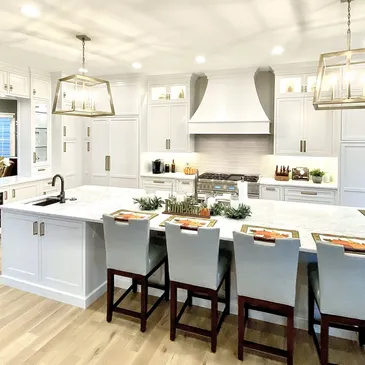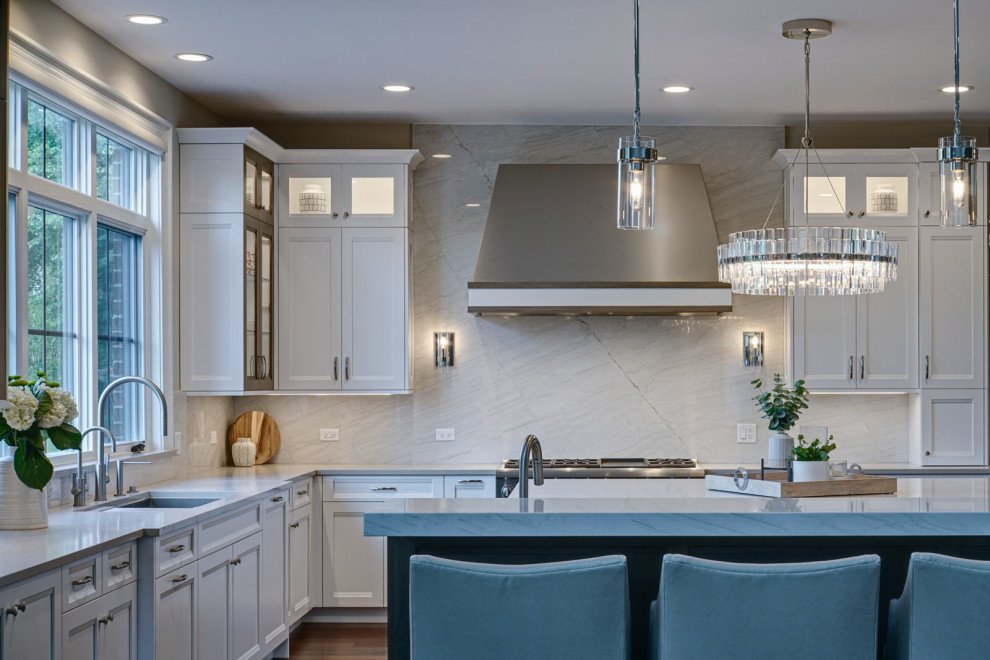Introduction: Understanding Granite’s Origins
Granite is one of the most recognizable and widely used natural stones in construction and design. From ancient monuments to modern granite countertops, its appeal lies in its durability, beauty, and timeless elegance. But what exactly transforms magma into granite? The short answer: magma + the right mineral mix and slow cooling deep beneath the Earth’s crust.
In this guide, we’ll explore granite’s formation process, its mineral composition, and how it transitions from a molten rock to a polished masterpiece featured in the Aardwolf granite countertop collection.

What Is Granite?
Granite is an intrusive igneous rock, meaning it forms when molten rock (magma) solidifies inside the Earth’s crust rather than erupting at the surface. Because granite cools slowly underground, large mineral crystals have time to form, giving granite its coarse-grained texture.

The Geological Recipe: Magma + Minerals + Time
1. Magma as the Base Ingredient
The primary component is silica-rich magma, often originating from melted continental crust. This magma contains essential elements like:
- Silicon
- Oxygen
- Aluminum
- Potassium
- Sodium
These elements combine with various metals and compounds to form the minerals that define granite.
2. The Key Minerals in Granite
The exact minerals determine granite’s color, pattern, and strength:
- Quartz: Clear or milky white, providing hardness and light reflection.
- Feldspar: Pink, white, or gray minerals that dominate granite’s appearance.
- Mica: Black or silver flakes that add sparkle and contrast.
- Amphibole: Contributes darker mineral streaks.
If you want a deep dive, here’s how granite is formed and how granite is made in detail.
3. Slow Cooling Equals Large Crystals
Granite’s hallmark texture comes from millions of years of slow cooling deep within plutons (large underground rock bodies). The slower the cooling process, the bigger and more defined the mineral crystals.
Granite Geology and Composition
Granite typically contains:
- 20–60% quartz
- 35–75% feldspar
- 5–15% mica
- Trace minerals like amphibole, garnet, or magnetite
These components give granite its compressive strength, making it more durable than marble, soapstone, and even concrete countertops.
Natural vs. Engineered Granite
While granite forms naturally underground, engineered granite uses crushed granite mixed with resin to create uniform slabs. Here’s a quick comparison:
| Feature | Natural Granite | Engineered Granite |
|---|---|---|
| Pattern | Unique | Uniform |
| Porosity | Moderate | Low |
| Heat Resistance | High | Moderate |
| Cost | Higher for exotic | Mid-range |
From Quarry to Countertop
Once exposed by erosion or excavation, granite is quarried in massive blocks. These blocks are then transported—often using specialized tools like a material handling trolley—to processing facilities where they’re sliced into slabs.
Granite in Modern Design
Granite remains a premium choice for:
- Kitchen countertops
- Bathroom vanities
- Flooring
- Fireplace surrounds
- Outdoor kitchens
You can also explore what are prefabricated granite countertops if you want a cost-effective, ready-to-install option.
Granite Maintenance Essentials
Even though granite is durable, it needs care to maintain its beauty:
- Clean granite countertops with mild pH-balanced cleaners.
- Seal annually to prevent stains.
- Polish periodically to restore shine.
- Repair chips with professional-grade epoxies.
- Remove stains using poultices designed for natural stone countertop surfaces.
For alternatives, check what is a good substitute for granite countertops for faux granite, laminate look, or Corian options.
Granite vs. Other Stones
| Feature | Granite | Quartz | Marble | Soapstone | Concrete |
|---|---|---|---|---|---|
| Durability | High | High | Moderate | Moderate | Moderate |
| Heat Resistance | Excellent | Good | Fair | Fair | Good |
| Scratch Resistance | Excellent | Very Good | Poor | Good | Fair |
| Maintenance | Moderate | Low | High | Low | High |
Granite often emerges as the best balance between elegance and function.
Popular Granite Colors and Styles
- White granite countertops: Bright and airy for modern kitchens.
- Black granite countertops: Sleek and bold.
- Brown, green, and blue granite: Unique, eye-catching designs.
- Exotic patterns available in Aardwolf premium granite slabs.
The Aardwolf granite pricing guide helps homeowners choose the best Aardwolf granite colors for their budget.
Conclusion: From Magma to Masterpiece
Granite begins its life deep beneath Earth’s crust as magma rich in silica and alkali metals. Over millions of years, that magma—combined with quartz, feldspar, mica, and other minerals—cools and solidifies into the granite stone we know today.
By the time it reaches your kitchen as a polished slab, it’s already traveled a geological journey spanning hundreds of millions of years.

